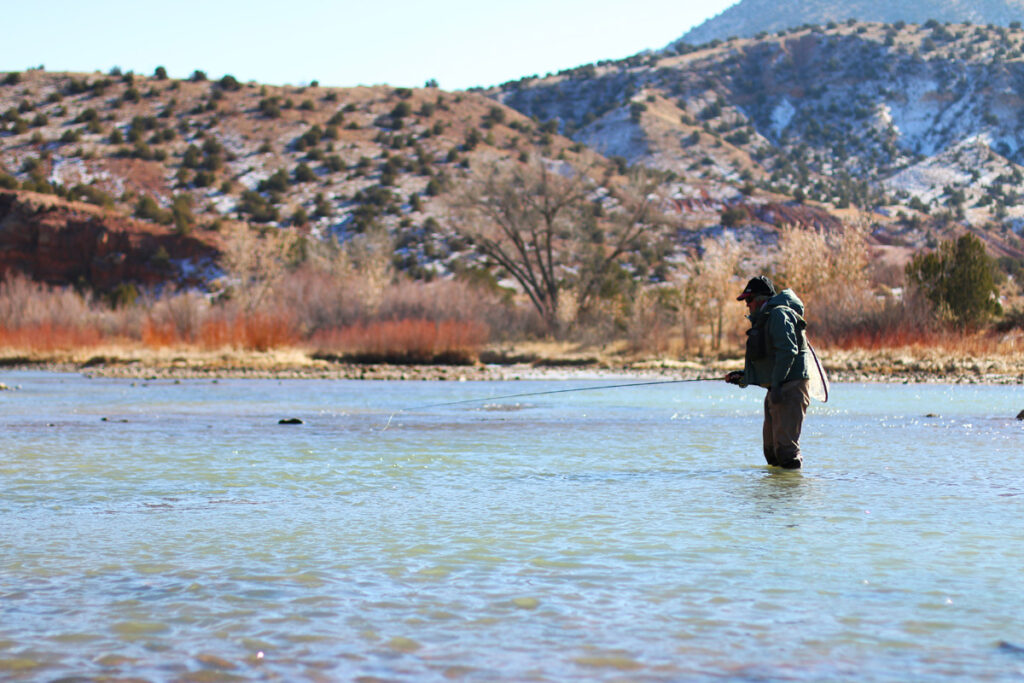
In winter, when trout can get as slushy as the waters in which they swim, anglers go on believing there’s some secret to success. Just because I fish a lot, some people assume I know this secret. Where are the fish? What are they biting on? Well, the fish are in the water. And since it’s winter, I know that most of the time, they’re biting on nothing. I know that such smarty pants answers are often the refuge of a fisherman who’s less than fully confident in his mastery of the craft. We divert, we distract; BS is our jam.
Nevertheless, there are facts one can know to increase the chances of success during the snowy season. Trout are cold-blooded (ectothermic), animals with metabolisms that rise and fall with the temperature of their environment. A trout’s metabolism revs up to optimum when the water is between about 50 and 68 degrees Fahrenheit, the common scenario during our early summer when fish really start pigging out. When the water gets too warm, as it often does in August, a trout can overheat and its metabolism will shut down. The same holds true when the water’s extremely cold, when anglers often have difficulty catching fish.
A turned-off car does not burn fuel; if it doesn’t burn fuel it has no need for it. Same goes for a trout, whose metabolism is its engine, when the water’s too hot or cold.
None of this is to say that a trout won’t eat when the water temperature is outside of the ideal range. Indeed, a hot trout in extreme stress may need some caloric intake to keep its system from collapsing. For all animals, the barest existence comes at some cost, which explains why on the warmest and coldest days, one might entice a trout to eat by bumping it on the nose with a worm.
What to do when the water temperatures are extreme? When the water’s above 70 degrees, don’t fish at all unless you plan on harvesting every fish you catch (heat-stressed fish usually die during or after being hooked).
During winter, the fish are slow, and their food is slow too. This reminder is particularly important for lure and streamer anglers. On cold days, a fast-moving lure looks unnatural and can cause a trout to ignore it or spook. In my opinion, drifted baits and flies offer the best chances for hookups, as they enable stationary fish to consume your offering with the least effort. Learn to read streams to understand where such fish may be, which, you may have guessed by now, is usually where the current is slow.
Bait is an especially good strategy because, while trout feed mainly by sight, their acute sense of smell enables them to find food with minimal effort. Ask anyone who ice-fishes Eagle Nest—a stinky bait will pull in hound-dogging fish from quite a distance. Salmon eggs stink. Powerbait stinks (and how!). Worms stink too, but in a good way.
Of course it’s difficult to know how the water temperature is influencing fish behavior if you don’t know what it is. Buy a water thermometer. It’s one of the most important pieces of gear you can own.



